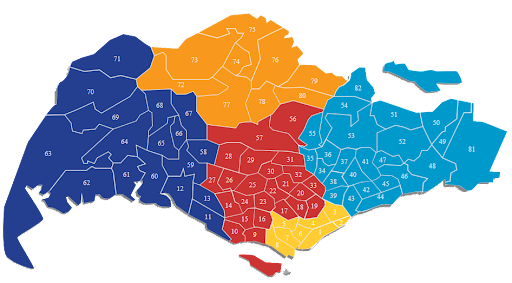Q1 gains are topped by a S$16 million deal at Leedon Residence, where the seller made S$4 million
Due to robust demand and robust household balance sheets, the percentage of resale transactions that result in losses is gradually declining.
April 28, 2025
CONDOsingapore.com
It was the most profitable transaction by quantity in the first quarter of 2025. In March 2025, a 6,125 square foot (sq ft) unit at Leedon Residence sold for S$16 million, giving the seller a healthy profit of S$4 million.
The 11th-floor penthouse unit at the freehold luxury development in District 10 was purchased in April 2017 for two-thirds of its sale price, or S$12 million, or S$1,959 per square foot (psf), according to data analysed by real estate consultancy Cushman & Wakefield.
In March 2025, the unit sold for S$2,612 per square foot.
Over an eight-year holding period, the annualised profit comes to 3.7%, while the seller's gross gain is roughly 33%.
Additionally, the data revealed that freehold sales in Singapore's coveted Core Central Region (CCR) accounted for the top five money-making transactions by quantum in Q1.
According to Wong Xian Yang, head of research at Cushman & Wakefield, this was due to the comparatively higher prices and freehold tenure, which typically fetches a premium.
However, as in prior quarters, CCR transactions outnumbered loss-making deals in the first quarter of this year. The range of losses was S$2.3 million to S$582,700.
A 1,668 square foot unit at the freehold condo Helios Residences was the deal that sucked up the most red ink in Q1 in terms of quantity. In March, the District 9 unit was sold for S$4 million, or S$2,397 per square foot. Compared to its initial January 2013 price of S$6.3 million (S$3,786 psf), this was 37% less. Over a holding period of just over 12 years, this translates to annualised losses of 3.7%.
An 850 square foot apartment at the 103-year leasehold The Scotts Tower in District 9 was the largest loser by percentage. In January, it was sold for S$1.8 million, or S$2,140 per square foot. Its initial price of S$2.9 million (S$3,464 psf) in January 2012 was 38% higher than this. This corresponds to yearly losses of 3.6% based on a 13-year holding period.
With gains of 121 to 132 percent, executive condominium (EC) transactions were the most lucrative in Q1 in terms of percentage gains. This keeps up a pattern that started in the first quarter of 2023.
A 1,528 square foot apartment at Yio Chu Kang's Hundred Palms Residences EC topped the list. The seller of the District 19 unit made S$1.7 million, or 132% of the original price of S$1.3 million (S$864 psf) in July 2017, when it sold for S$3.1 million (S$2,001 psf) in March of this year. This translates into an annualised profit of 11.6% over a roughly seven-and-a-half-year holding period.
With ECs excluded, units in the suburban Outside Central Region (OCR) accounted for three of the top five percentage gainers, while the remaining two were in the Rest of Central Region (RCR) or the city fringe.
In District 15, a 1,119 square foot freehold apartment at 268B Joo Chiat Road was the best deal in terms of percentage gains. In February, it sold for S$1.9 million (S$1,679 per square foot), and the seller made just over S$1 million. This represented a 125% increase in price from its initial February 2016 price of S$837,000. This corresponds to an annualised profit of 9.4% based on a nine-year holding period.
Caveats for non-landed private homes that were purchased in Q1 2025 and had a previous purchase history between January 2012 and March 2025 were the focus of Cushman & Wakefield's investigation. Transaction fees and taxes, including buyer's and seller's stamp duties, were not included in the analysis.
According to caveat data of landed and non-landed private homes, prime CCR properties made up 58% of loss-making transactions in the first quarter of this year. Of these transactions, the OCR accounted for 14% and the RCR for 28%.
Wong pointed out that the majority of CCR sales, at 86%, were still profitable even though the CCR saw a higher percentage of deals that resulted in losses.
Additionally, the overall percentage of landed and non-landed home deals that resulted in a loss decreased from 3.3% in the previous quarter to 2.7% in the first quarter. Wong ascribed this to the robust demand for private home upgrades in the face of low unemployment rates and robust household balance sheets, as well as the strong holding power of homeowners.
He noted that private home prices are therefore anticipated to increase by about 3% for the entire year 2025, which would be a slight slowdown from the 3.9% year-over-year growth in 2024.
Wong predicted that there would be few deals that resulted in losses overall, unless there were unexpected economic shocks or new cooling measures.





 Reply With Quote
Reply With Quote
